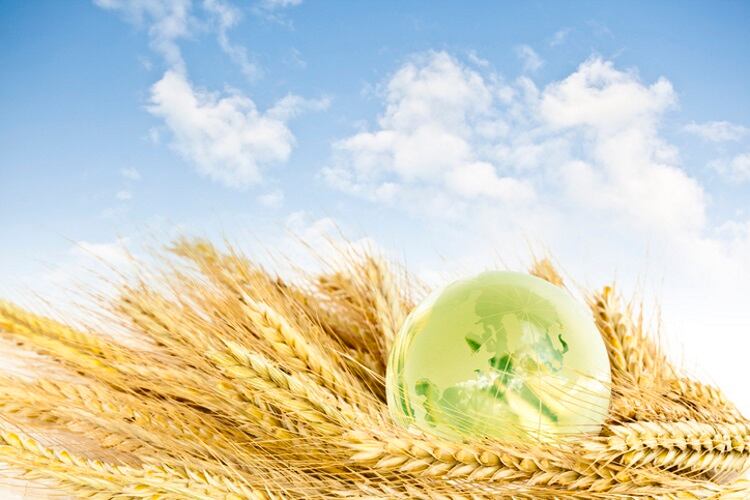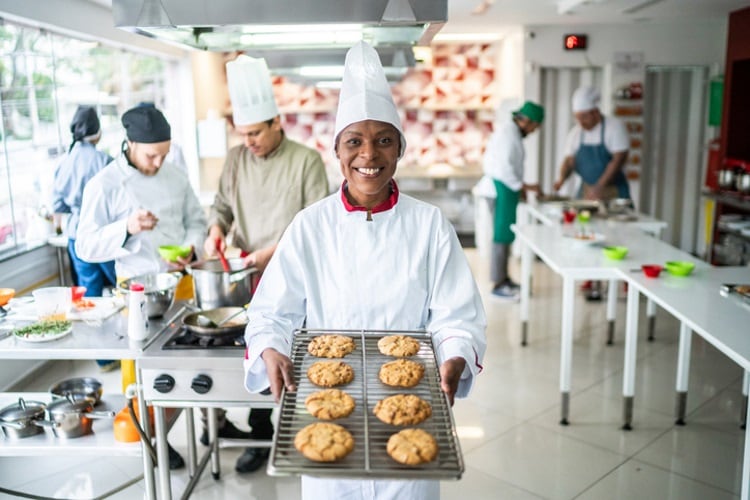
Yusuf Olamide Kewuyemi, a doctoral student at the University of Johannesburg in South Africa was the winner of the Awards, picking up €5,000 for his development of 3D-printed crackers from processed whole-grain flour made of African-grown peas and quinoa.
According to Dr Lutz Popper, scientific director of MC Mühlenchemie and originator of the Awards, the research demonstrates that composite flour has enormous potential to make the future of our food production more sustainable.
“The research projects submitted demonstrate that composite flour has enormous potential to make the future of our food production sustainable,” said Dr Popper, who was also chairman of the jury.
“They show that with intelligent and innovative methods, we can reduce our dependence on wheat without having to give up taste and quality. This look into the future promises many exciting developments, and we’re looking forward to continuing to promote and support progress.”
The Awards aimed to highlight the scientific work around the production and processing of non-wheat flours and their blends with wheat flour, especially those that use local commodities. The objective is to encourage research into alternatives to wheat flour, in order to achieve greater independence from wheat and global markets.
Twenty-three research projects spanning nine countries on four continents were submitted for the 2023 Composite Flour Innovation Award. The jury of international experts evaluated the studies and practical projects completed between 2019 to 2022 and selected three awardees.
“The impressive diversity of the submissions shows the worldwide importance and relevance of composite flour. The work reflects developments and innovations in the field and helps us gain a deeper understanding of the use and processing of composite flours,” said Dr Popper.
Global relevance and variety

First prize was awarded to Kewuyemi for his paper: African legume cowpea-based composite bioprocessed flour and its resultant wholegrain and multigrain three-dimensional (3D) printed biscuits.
In order to raise the flour’s nutritional content and improve its bioavailability, Kewuyemi used innovative techniques like fermentation and germination, creating a functional, highly nutritious snack in the form of a 3D-printed cracker.
The research proves that traditional crops can be transformed into health-promoting foods using innovative processing techniques.
“Yusuf convinced [the jury] with his unusual approach, statistical soundness and clarity of presentation,” said Dr Popper, adding the awards “confirmed that Africa is a focal point for composite flour research.
“Of course, cassava and sorghum or millet play a dominant role [there], however, we were surprised how important composite flour is in the region and that one should be prepared to use composite flour as there can always be a future: even more so amid the sharp fluctuations in wheat price and availability.”
Second prize went to Abdulhakim Endris of Jimma University in Ethiopia.
His study - Optimising the process variables for the production of oat compound biscuits - looked into the optimum mix of wheat and oat flour for making biscuits.
Different parameters were analysed, including mixing ratio, baking time and baking temperature, along with their influence on properties like the weight, thickness, spread ratio and texture of the biscuits. The results showed that a mix ratio of 15% oats to 85% wheat, a temperature of 300°C and baking time of 3:30 minutes provide the ideal conditions for making oat/wheat biscuits that do not differ from pure wheat biscuits in their sensory qualities.
This creates the basis for the further commercialisation of mixed oat biscuits, the development of applications for other oat products, and the promotion of oats as a little-used grain to fill out the annual grain deficit.
Saqip Arif of the University of Karachi in Pakistan was awarded third place for his study into the potential of composite flour from mixes of underused grains in response to the worldwide rise in wheat prices and increasing sustainability concerns.
The results show that mixed flours have a better nutrition profile, are rich in fibre and bioactive compounds, and thus represent a promising possibility for reducing dependence on wheat, although challenges remain with regard to processability and sensory characteristics.
The Flour Innovation Awards jury
- Dr Lutz Popper, scientific director of MC Mühlenchemie and a renowned specialist in enzyme applications in food processing. Author of Enzymes - Cool Facts.
- Jeffrey A. Gwirtz, mill engineer, milling industry consultant and CEO of JAG Services Inc. Contributor of several articles for World Grain since 2014.
- Michael Gusko, global director of Innovation for the GoodMills Group.
- Rosana Sica, technical director of Atime SA in Argentina and recognised expert in the use of enzymes to improve wheat flour quality.
- Sridhar Bhavani, senior scientist, head of Rust Pathology and Molecular Genetics at the International Maize and Wheat Improvement Center (CIMMYT).
- Prof Olugbenga Ben Ogunmoyela, president of Consumer Advocacy for Food Safety and Nutrition Initiative (CAFSANI) and CEO of Glytabs Consulting Ltd.
State of the global wheat market

During our interview on 11 July, Dr Popper said world production of wheat is forecast to increase significantly compared to 2022 to around 755 million tonnes with the largest harvests coming from Russia, EU and even Ukraine.
“Larger supplies will lead to an increase in world trade,” he said.
“The largest export, by the way, will be Russia with 45 million tonnes, followed by the EU with 38 million and Canada with 27 million tonnes. UK is in 11th place with an expected export of 1.7 million tonnes. Although comparatively small, that's already more than half the size of Turkish flour export [of 3 million tonnes].”
On 17 July, Russia announced its withdrawal from the Black Sea Grain Initiative.
In July 2022, the UN and Turkey had achieved a rare diplomatic breakthrough and finalised a deal, which allowed for the shipment of grain from Ukraine despite the ongoing conflict in the country.
Additionally, the deal enabled Russia to export food and fertiliser worldwide, despite facing Western sanctions.
The agreement was initially planned to be extended every four months; however, this was cut back to a two month extension. This change came amidst growing discontent from Russia, which perceived restrictions that limited the full dispatch of its grain and fertiliser exports.
“The suspension of the Black Sea Grain Initiative - in isolation - may not destabilise global food inflation in the short term, as Ukrainian grain shipments declined significantly from March to June,” said Kumar Amit, senior specialist for The Smart Cube.
“However, the termination of the grain deal - combined with concerns related to possible drought in Europe and the onset of the El Niño weather phenomenon in the second half of 2023 - may lead to a supply shortfall, putting upward pressure on prices.”
Flour treatment specialist MC Mühlenchemie was founded in 1923 in Frankfurt, Germany, and has been part of the Stern-Wywiol Gruppe since 1990.
A world leader in flour treatment, MC Mühlenchemie provides custom solutions for the standardisation, improvement and enrichment of flour. It also processes over 150 million tonnes of wheat every year and has a customer base of over 2,000 mills in over 150 countries.
In its 100-year history, MC Mühlenchemie has been a pioneer in enzyme technology, developing groundbreaking products like Al-phamalt, Powerzym, Pastazym, Tigerzym, Compozym and Omizym.





